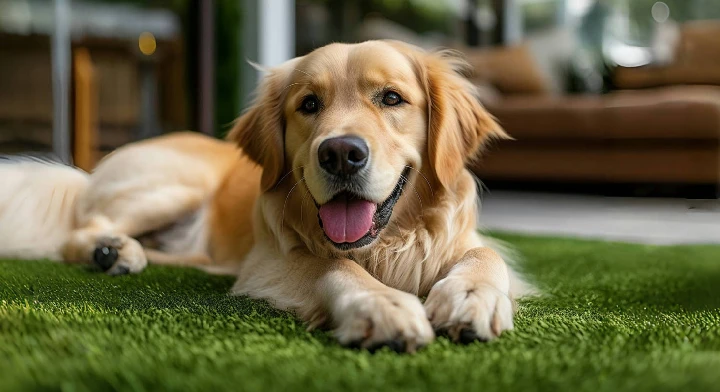
- Afrikaans
- Arabic
- Belarusian
- Bengali
- Czech
- Danish
- Dutch
- English
- Esperanto
- Estonian
- Finnish
- French
- German
- Greek
- Hindi
- Hungarian
- Icelandic
- Indonesian
- irish
- Italian
- Japanese
- kazakh
- Rwandese
- Korean
- Kyrgyz
- Lao
- Latin
- Latvian
- Malay
- Mongolian
- Myanmar
- Norwegian
- Persian
- Polish
- Portuguese
- Romanian
- Russian
- Serbian
- Spanish
- Swedish
- Tagalog
- Tajik
- Thai
- Turkish
- Turkmen
- Ukrainian
- Urdu
- Uighur
- Uzbek
- Vietnamese
Dealing with Dog Waste on Artificial Grass for a Clean and Safe Yard
Jan . 01, 2025 06:05 Back to list
Understanding Dog Pee and Poop Management on Artificial Grass
The rise in popularity of artificial grass has transformed pet ownership, creating a beautiful, low-maintenance landscape that pet owners can appreciate. However, the practicalities of having dogs relieve themselves on synthetic turf bring about a unique set of challenges and considerations. Caring for artificial grass in the presence of dog urine and feces requires understanding its characteristics and maintenance methods.
Artificial grass is designed to be durable and aesthetically pleasing. However, it's not impervious to dog waste. When a dog urinates on the turf, the liquid may not be absorbed as it would on natural grass. Instead, it gathers on the surface and seeps through the blades. The key to maintaining artificial grass and preventing odors lies in prompt and effective cleaning.
Managing Urine
When dogs urinate on artificial grass, the urine can lead to an unpleasant smell if not appropriately addressed. The first step in urine management is to rinse the area with water. This helps to dilute the urine and wash it away from the surface. It’s advisable to do this frequently, particularly in high-traffic areas where dogs tend to relieve themselves.
For additional odor control, many pet owners opt for specially formulated enzymatic cleaners designed for use on artificial grass. These cleaners break down the uric acid and other compounds present in the urine and help eradicate the smell. It’s important to choose non-toxic and pet-safe products, ensuring that your furry friends remain unharmed during the cleaning process.
Furthermore, consider installing a drainage system under your artificial grass. Proper drainage will not only keep the surface cleaner but also promote faster drying after rain or washing. This can significantly reduce the likelihood of odors lingering in your yard.
Dealing with Feces
dog pee and poop on artificial grass

Dealing with dog feces on artificial grass follows a straightforward process that mirrors the steps taken with natural grass. As soon as you notice the waste, pick it up using a dog waste bag, as you would in any environment. Prompt removal is crucial to prevent weeds, odors, and the potential spread of bacteria.
After picking up the feces, it’s essential to clean the affected area. Use a mixture of water and a mild detergent to gently scrub the surface. Following this, rinse the area thoroughly to ensure that any leftover residue is washed away. Enzymatic cleaners are also useful for breaking down organic matter and eliminating odors that may linger after cleaning.
Preventative Measures
Training your dog to use specific areas for their bathroom needs can significantly reduce the impact of urine and feces on your artificial grass. Designate a specific patch of turf or a sandpit for your pet to relieve themselves, directing their behavior consistently. Positive reinforcement techniques, such as treats and praise when they use the designated area, can help encourage this behavior.
Additionally, monitoring your dog's diet can also play a role in how their waste interacts with your artificial grass. Lowering protein levels in their food can lead to less pungent urine, therefore reducing odors.
Advantages of Artificial Grass
Despite the challenges posed by dog waste, artificial grass also offers distinct advantages for pet owners. It eliminates muddy patches, ensuring a clean and safe environment for pets to play. Moreover, unlike natural grass, artificial turf does not suffer from wear and tear, meaning you can maintain an attractive lawn year-round regardless of the activity level of your dogs.
In conclusion, while dog pee and poop present challenges for artificial grass care, the benefits it provides can outweigh the inconveniences. Regular maintenance, quick cleanup, and preventative training can ensure that both pets and owners can enjoy the beauty and functionality of synthetic lawns. With a little effort, artificial grass can remain a pleasant and durable landscape for you and your canine companions.
-
The Benefits of Artificial Turf for Indoors
NewsJul.15,2025
-
How Artificial Grass Suppliers Ensure Quality Products
NewsJul.15,2025
-
Artificial Grass and Pets: A Space for Relaxation
NewsJul.08,2025
-
Balcony & Outdoor Decoration with Artificial Grass
NewsJul.08,2025
-
Best Indoor Artificial Grass for Home
NewsJul.07,2025
-
Best Pet Turf for Dogs: Safe & Durable Artificial Grass Options
NewsJul.07,2025
Products categories









